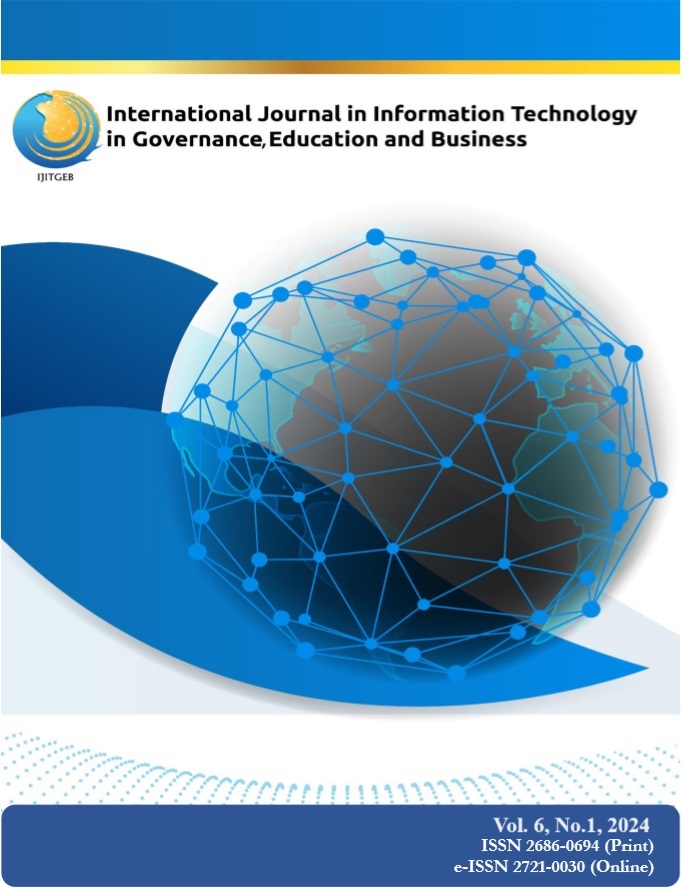Optimizing Remote Communication: Data-Driven Strategies for Workplace Connectivity at Laguna University
Abstract
The study analyzed remote communication practices of faculty members to propose strategies for workplace connectivity at Laguna University. The following objectives were: (1) Measure the frequency and type of communication channels utilized by Laguna University faculty since adopting remote work models. (2) Determine the relationship between the frequency of communication channels and employee satisfaction with remote work communication practices of faculty members at Laguna University. (3) Evaluate perceived communication patterns in the current practices of faculty members at Laguna University. (4) Propose strategies to improve communication effectiveness and employee satisfaction in the remote work environment at Laguna University. The study employed a quantitative method using a non-probability sampling technique with 34 respondents. Descriptive statistics like frequency distribution table, mean, median, mode, standard deviation, and statistical tools such as the Spearman Rank Correlation and Wilcoxon Signed Rank Test were utilized. A survey questionnaire was used to collect the data available through Google Forms. The most common channel of communication by the faculty in remote work before the pandemic was the use of instant messaging (IM). Email use, video conferencing, and instant messaging were used significantly more during and after the pandemic than before. Nonetheless, there was no significant evidence to suggest a difference in the frequency of conducting in-person meetings. Similarly, the most common media channel of the faculty before the pandemic was instant messaging. Top on the list of purposes was sharing documents and information through emails, followed by complex discussions and brainstorming sessions through in-person meetings. There was a weak positive monotonic correlation between the use of communication channels and employee satisfaction of Laguna University faculty. Most respondents said they somewhat agreed with the statements regarding communication patterns, especially regarding timeliness, clarity, and accessibility; however, they strongly agreed that they felt confident that they understood the information being communicated by colleagues remotely. Strategies were proposed to improve communication effectiveness and employee satisfaction in the remote work environment at Laguna University.
Received Date: April 14, 2024
Revised Date: May 29, 2024
Accepted Date: June 23, 2024
Click to Access and Download the Article:
References
- Allen, T. D., Golden, T. D., & Shockley, K. M. (2015). How effective is telecommuting? Assessing the status of our scientific findings. Psychological Science in the Public Interest, 16(2), 40–68. https://doi.org/10.1177/1529100615593273
- Anderson, A. J., Kaplan, S. A., & Vega, R. P. (2014). The impact of telework on emotional experience: When, and for whom, does telework improve daily affective well-being? European Journal of Work and Organizational Psychology, 24(6), 882–897. https://doi.org/10.1080/1359432x.2014.966086
- Anderson, D., & Kelliher, C. (2020). Enforced remote working and the work-life interface during lockdown. Gender in Management: An International Journal, 35(7/8), 677–683. https://doi.org/10.1108/gm-07-2020-0224
- Antje. (2023). Power dynamics and inclusion in virtual meetings. Commons Library. https://commonslibrary.org/power-dynamics-and-inclusion-in-virtual-meetings/
- Bonadarouk, T., Renkema, M., Khapova, S., & van Dierendonck, D. (2022). Special Issue Call for Papers: HRM for resilient societies: A call for actionable knowledge. The International Journal of Human Resource Management.
- Bryant, A. (2023). Effective meetings in remote work settings: Best practices and strategies. Remote Collaboration Review, 10(1), 55–68.
- DeFilippis, E., Impink, S. M., Singell, M., Polzer, J., & Sadun, R. (2022, May 23). The impact of COVID-19 on digital communication patterns. Nature.com. https://www.nature.com/articles/s41599-022-01190-9
- DeLone, J. (2021). Enhancing remote work meetings: The importance of clear agendas. Journal of Remote Work Communication, 7(2), 45–58.
- Donnelly, R., & Johns, J. (2020). Recontextualising remote working and its HRM in the Digital Economy: An Integrated Framework for theory and Practice. The International Journal of Human Resource Management, 32(1), 84–105. https://doi.org/10.1080/09585192.2020.1737834
- Jarvenpaa, S. L., & Välikangas, L. (2020). Advanced Technology and end-time in organizations: A doomsday for collaborative creativity? Academy of Management Perspectives, 34(4), 566–584. https://doi.org/10.5465/amp.2019.0040
- Kelliher, C., & de Menezes, L. M. (2019). Flexible working in organisations. Routledge. https://doi.org/10.4324/9781351128346
- Kröll, C., Doebler, P., & Nüesch, S. (2017). Meta-analytic evidence of the effectiveness of stress management at work. European Journal of Work and Organizational Psychology, 26(5), 677–693. https://doi.org/10.1080/1359432x.2017.1347157
- Lee, S., & Kim, J. (2021). The influence of remote work communication satisfaction and CSR association on employee alienation and job satisfaction: a moderated-mediation study. Information Technology & People, 36(5), 1810-1834.
- Malhotra, A., Majchrzak, A., & Rosen, B. (2020). Leading virtual teams: Holding the critical space open. Human Resource Management Review, 30(3), 100693.
- McCarthy, T. (2024). Meeting etiquette in remote work environments. Communication Technology Review, 9(4), 321–335.
- Paerata, K. (2023). The use of workplace instant messaging since covid-19. Telematics and Informatics Reports, 10, 100063. https://doi.org/10.1016/j.teler.2023.100063
- Sekaran, U. (2003). Research methods for business: A skill building approach. John Wiley & Sons.
- Smith, J., & White, L. (2022). Lessons from the COVID-19 pandemic: Shaping the future of work and remote work practices. Workforce Innovation Journal, 15(1), 34-49.
- Suchman, L., & McCall, R. (2020). Leveraging asynchronous communication in remote work settings. Journal of Virtual Collaboration, 3(1), 18–27.

This work is licensed under a Creative Commons Attribution-ShareAlike 4.0 International License.






